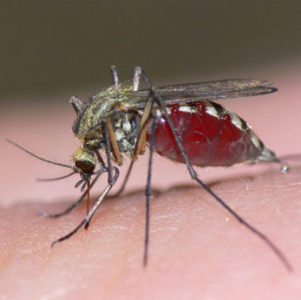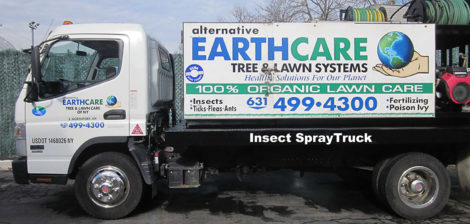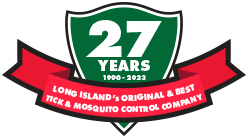Posted On:
Category: Category:
Tips For Controlling Mosquitoes, Fleas, and Ticks In Your Yard
Tips For Controlling Mosquitoes, Fleas, and Ticks In Your Yard
Spring is on its way to Long Island, and it won’t be long now before we are swatting at annoying mosquitos and worry about fleas and ticks. As homeowners, we put so much time, effort, and money into our yards only to be chased out of them by annoying pests. This year, come prepared to do battle with these pests. We have compiled a list of DIY home remedies to prevent fleas, ticks, and mosquitoes.
DIY Flea Remedies
When fleas gain entry into your home, a single flea can quickly become 1,000 fleas. Once inside your home, fleas can become a serious problem and even harder to get rid of. Thankfully we have a DIY flea trap idea to help manage your flea problem. First, fill a shallow pan with soapy water and place it in an area with high flea activity. Place a lamp directly over the water to warm the water. Fleas will be drawn to the lamp’s heat and then drown in the soapy water. Here are a few other ways to put an end to fleas in your Sturgeon Bay home and on your pets:
Lemon Wash Deterrent
Fleas usually get into our homes by hitching a ride on our pets. To get fleas off of pets, use this natural detergent. You will need four slices of lemon, one tablespoon salt, and 6 cups of water. Heat the water in a pan until boiling. Add in the salt and lemon. Boil for two minutes and then remove from the heat. Let the mixture steep for 24 hours, then apply to your pet’s fur after a bath.
Diatomaceous Earth
Diatomaceous earth is a natural product made from the fossilized remains of tiny, aquatic organisms called diatoms. Their skeletons are made of a natural substance called silica which is sharp and can cut holes in the bodies of fleas, ticks, and spiders. Diatomaceous Earth is extremely absorbent and will dehydrate the flea, causing it to die. Use inside your home around windows, doors, baseboards, dog beds, or carpets. Check with your veterinarian before applying the earth directly to your pet’s fur.
Remove Flea & Tick Habitats
Fleas and ticks usually end up on our pets while they are outside our home. Creating a pet-friendly yard is crucial in controlling fleas and ticks.
- Treat the Yard: Use natural flea repellants that use essential oils and other non-toxic ingredients that can be sprayed on your yard to prevent fleas and ticks from breeding near your home.
- Clean Up Your Lawn: Remove leaves and other debris outside your Sturgeon Bay home at least 6-18 inches from the foundation of your house.
- Mow the Lawn: Do not let your grass grow too high. Fleas and ticks love to hide and breed in tall grass.
- Apply Cedar Mulch: Fleas hate cedar, so applying cedar mulch in your gardens and around your home’s foundation acts as a natural barrier.
DIY Mosquito Remedies
Eliminate Standing Water Around Your Sturgeon Bay Home
Another annoying pest we are faced with during the spring is the mosquito. Thankfully, managing mosquitoes in your yard is relatively easy once you understand their life cycle. One of the most common and effective ways to cut the mosquito population in your yard is by eliminating standing water. The most important fact to know about mosquitoes is that female mosquitoes require standing water in order to lay their eggs. The eggs will hatch in 3 days, and in less than two weeks, they will emerge as adults ready to feed. Places in your yard that can hold standing water include animal waterers, old tires, potholes, areas of pooling water, rain gutters, tree stumps, children’s toys, and patio furniture.
Use Larvicide In Standing Water
If you simply cannot eliminate all the standing water in your yard, fear not. There is still a way to keep your fabulous water features or animal waterways and still prevent mosquitoes from laying eggs in them. In places where you can’t get rid of standing water, you should use mosquito dunks. These dissolvable pellets can be found at any hardware or gardening store. They use a natural larvicide that kills and prevents mosquito larvae from maturing to the adult stage.










